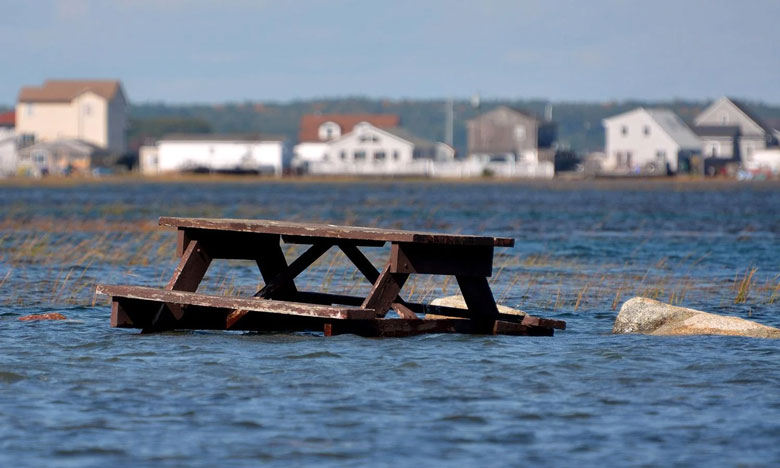As we all are painfully aware after January’s damaging coastal storms, our shores are vulnerable to flooding and, unfortunately, climate scientists are warning that these events are becoming more common as sea levels rise.
As daunting as this might feel, we can act now to reduce our vulnerability. The solutions are all around us, in nature. Nature-based climate solutions leverage the inherent resilience of coastal ecosystems and can mitigate the negative impacts of rising sea levels.
Sea level rise is a concern right now, not out in the future. The January storms were in large part so damaging because sea levels are higher than when most wharfs and buildings were built. The data from sea level gauges scattered across the coast tell the story.
Sea levels are higher than when most wharfs and buildings were built.
The Bar Harbor gauge has provided data since 1950 and demonstrations an 8-inch sea level rise over the last 74 years and shows a current rate of increase of 1 inch every 8 years. While that might seem fast, gauges across the Gulf of Maine show that the rate is becoming more rapid over time and over the next 75 years will result in an estimated 3-5-foot sea level rise.
To translate this into coastal flooding, the Maine Climate Council reports that a 1-foot sea level rise will lead to a ten-fold increase in coastal flooding (and keep in mind that this does not account for any changes to storm intensity, frequency, or possible new trends in their track direction).
The traditional responses to flooding are rigid man-made solutions, such as seawalls and jetties, which can be ecologically damaging and financially burdensome. In cities such as Portland and Boston, building the infrastructure to hold back the sea is expected to cost billions. At these prices, the solutions will not be feasible or even desired everywhere.
Working with nature is a sustainable alternative to seawalls and jetties. Nature-based solutions harness the resilience of natural ecosystems to adapt to changing conditions. These solutions involve the conservation, restoration, and sustaining of coastal habitats such as salt marshes, oyster reefs, and dunes to act as natural buffers against rising sea levels.
In Maine, where coastal ecosystems play a vital role in supporting biodiversity and providing ecosystem services, nature-based solutions present a holistic approach that aligns with the region’s natural resources-based economy.
Salt marshes play a crucial role in mitigating the impacts of sea level rise by acting as a natural buffer, absorbing and dissipating wave energy, reducing erosion, and providing habitat for diverse flora and fauna. Marshes also reduce global carbon dioxide levels through trapping carbon.
In fact, salt marshes alongside eel grass, oyster reefs, and other coastal habitats that all serve as storm buffers have been measured to be more efficient (up to five times) at carbon sequestration than tropical forests.
Finally, these coastal habitats should be near and dear to every seafood lover’s heart as they provide safe nursery habitat for fish that support the marine economy, including lobster.
There are many ways to create these natural alternatives from the use of existing natural systems (protecting a marsh), managing or restoring those systems (restoring eel grass beds), or creating new systems (combining mud flats, marshes, and man-made structures).
A key aspect of engaging nature-based solutions is caring for them over time to ensure they have the space and health to keep pace with sea level rise. For example, marshes will need room to roll back inland as sea levels rise, enabling them to provide the critical services over time. This means we need to be adaptive in balancing the conservation of natural ecosystems with coastal development.
As Maine grapples with the escalating challenges of sea level rise, embracing nature-based solutions emerges as a pragmatic and sustainable approach. By leveraging the resilience of coastal ecosystems, the region can fortify its defenses against rising sea levels while simultaneously promoting biodiversity, improving water quality, supporting the marine and tourism economies, and preserving the intrinsic beauty of the coast.
Jennifer Seavey is chief programs officer for Island Institute, publisher of The Working Waterfront. She has a Ph.D. in natural resource conservation from the University of Massachusetts at Amherst where her dissertation focused on the resiliency of barrier islands in the face of sea-level rise.





